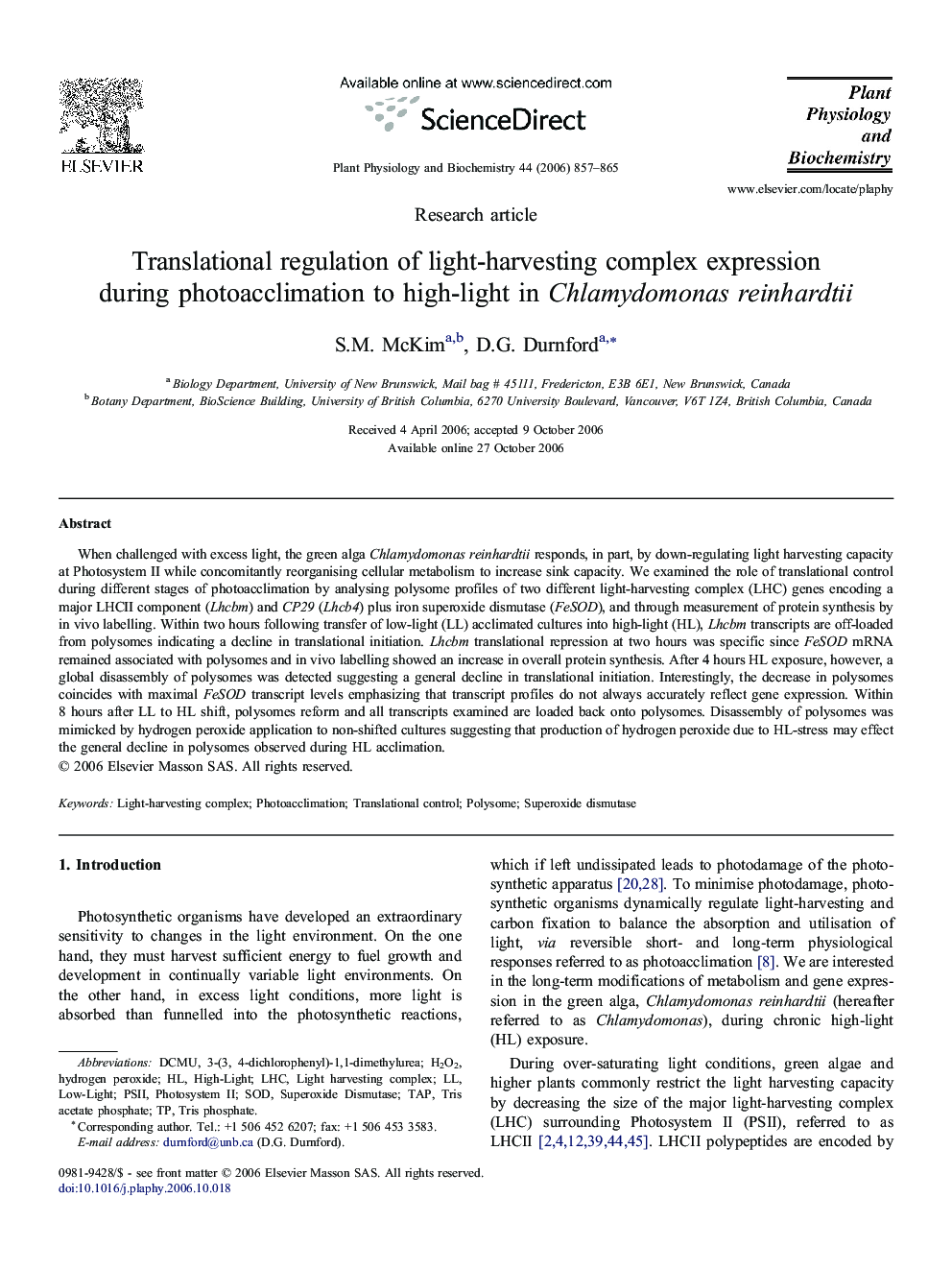| Article ID | Journal | Published Year | Pages | File Type |
|---|---|---|---|---|
| 2016628 | Plant Physiology and Biochemistry | 2006 | 9 Pages |
When challenged with excess light, the green alga Chlamydomonas reinhardtii responds, in part, by down-regulating light harvesting capacity at Photosystem II while concomitantly reorganising cellular metabolism to increase sink capacity. We examined the role of translational control during different stages of photoacclimation by analysing polysome profiles of two different light-harvesting complex (LHC) genes encoding a major LHCII component (Lhcbm) and CP29 (Lhcb4) plus iron superoxide dismutase (FeSOD), and through measurement of protein synthesis by in vivo labelling. Within two hours following transfer of low-light (LL) acclimated cultures into high-light (HL), Lhcbm transcripts are off-loaded from polysomes indicating a decline in translational initiation. Lhcbm translational repression at two hours was specific since FeSOD mRNA remained associated with polysomes and in vivo labelling showed an increase in overall protein synthesis. After 4 hours HL exposure, however, a global disassembly of polysomes was detected suggesting a general decline in translational initiation. Interestingly, the decrease in polysomes coincides with maximal FeSOD transcript levels emphasizing that transcript profiles do not always accurately reflect gene expression. Within 8 hours after LL to HL shift, polysomes reform and all transcripts examined are loaded back onto polysomes. Disassembly of polysomes was mimicked by hydrogen peroxide application to non-shifted cultures suggesting that production of hydrogen peroxide due to HL-stress may effect the general decline in polysomes observed during HL acclimation.
